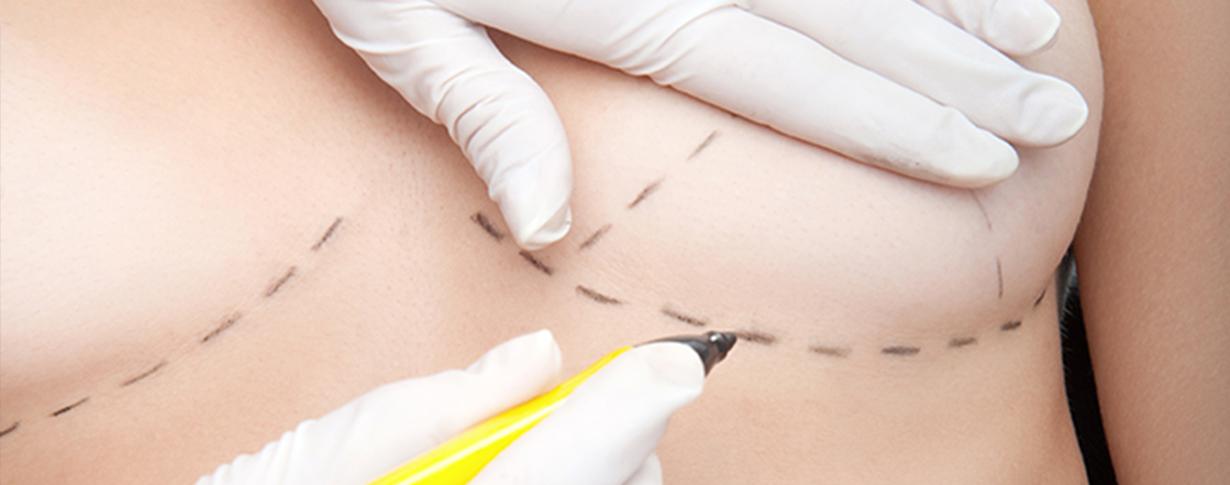Breast Augmentation (MAMMOPLASTY)
If you are considering breast augmentation surgery…
Breast augmentation mammoplasty (surgery) is a surgical procedure that changes the size and shape of the breast:
- Women who think their breasts are too small
- In women with unilateral breast development disorder/asymmetry due to congenital or acquired reasons,
- Breast augmentation surgery can be performed for breast reconstruction after breast cancer surgery.
If you’re considering breast augmentation, this brochure will give you the basics of the procedure – when it works, how it’s done and what results you can expect. However, you may not find answers to all your questions in this brochure. For more detailed information about the surgery, consult our doctor.
The most suitable breast augmentation surgery candidates;
Breast augmentation surgery improves your appearance and increases your self-confidence, but you may not be able to get an image that matches your ideal image. Before deciding on the operation, think very well about your expectations and share them with your surgeon.
The most suitable candidates for breast augmentation surgery are individuals who do not aim to achieve perfection in their appearance but want improvement. If you are physically healthy and your expectations are realistic, you may be a good candidate.
Although breast augmentation surgery is mostly performed for the purpose of enlarging the breasts, it is sometimes performed by using permanent or inflatable prostheses or by injecting a mixture of stem cells and fat prepared from your own fat to eliminate the difference between breast sizes in asymmetrical breasts and even to regenerate breasts after cancer surgery.
Breast Augmentation Methods
1. With Your Own Fat and/or Stem Cell Combination
2. With Silicone Prosthesis
1. BREAST ENLARGEMENT WITH YOUR OWN OIL AND/OR STEM CELL COMBINATION
Breast Augmentation with Oil, which has become increasingly popular today and is becoming more popular in the world, is an alternative treatment method for patients who do not want to put foreign substances into the body.
How is it applied?
It is a short, incision-free, simple process that consists of removing the fat on both sides of your body (love handles), inner thighs and abdomen-basin by liposuction, passing them through special centrifuge devices in sterile environments, and then injecting them into the breast. It is a technique that allows the most realistic amount to be given to you during the application by purifying your oil from excess water etc. after these processes.
Are Stem Cells Necessary?
The ability of the oils obtained from you to be permanent in the injected area following the preparation depends on many factors. The fact that breast augmentation could not be performed with your own oils until today was due to the inability to prepare the fats properly for injection and, more importantly, the lack of adequate and rapid formation of vascularization that would allow the fats to live in the area where they were transplanted. At this point, following the developments in stem cell technologies, angiogenetic stem (repairing) cells that increase vascularity and mesenchymal stem cells with the potential to transform into fat have been the most important developments that increase the survival of these planted fats in that region.
Today, more and more fat breast augmentation surgeries are performed in the world, and fat injection techniques containing stem cells are preferred. This procedure becomes a good reconstruction option not only for breast augmentation, but also for patients who have lost their breasts due to cancer.
How Much Can Your Breast Be Enlarged With Fat Transplantation?
Today, normal breast prostheses are made from 150cc to 450cc on average. In the same way, oil transplantations are performed up to a maximum of 300cc in 1 session. Therefore, 300cc of magnification can be achieved in one session, which is sufficient for most patients. However, if more is desired, a second session will be appropriate after 3 months.
Do Injected Oils Harm the Breast?
There is no damage to the breast tissue in breast augmentation with the oils prepared in accordance with the technique and well. The sowing sites are not related to the breast tissue and are applied around the mammary glands.
Is the Breast Augmentation Procedure Permanent?
Breast augmentation with fat transplantation is usually performed in 2 sessions, depending on the patient’s current breast size. Although permanence varies in the literature, you are not expected to fully return to your old self.
What Are the Risks?
Fat Necrosis; They are usually seen after excessive oil cultivation in a certain area without control, and after insufficient nutrition of the planted oil. They show themselves with redness in the area and calcification on the radiograph.
Infection; It occurs because the planted oil is infected in that area. They occur due to not paying attention to sterilization conditions or deterioration of the general condition of the patient.
Do They Cause Cancer?
It has not been shown in the literature that stem cells cause cancer. However, in case of cancer in any part of the body, stem cells have been shown to grow cancer cells.
2. BREAST ENLARGEMENT WITH SILICONE PROSTHESIS
Implant (Prosthesis) types; All breast implants have an outer silicone sheath; but two different types of prostheses are used as content: It is filled with salt water called silicone gel or saline.
Depending on their shape, anatomical (drop-anatomical prosthesis) or round shaped prostheses can be used. Which prosthesis will be used will be determined after consultation with your doctor, as it may vary according to the shape of the breast and breast structure.
Do Silicone Prostheses Affect Breastfeeding?
There is no evidence that breast implants affect fertility, pregnancy or breastfeeding ability.
When breast prostheses, whose durability has been proven by various biomechanical tests, are naturally encountered with a cutting or piercing object, rupture of the sheath and leakage of the material inside occur. The silicone or saline content infiltrates the surrounding tissues. In this case, the prosthesis must be replaced. In saline prostheses, sodium and chloride spreading to the surrounding tissue are absorbed by the body in a short time.
However, if the denture sheath filled with silicone gel ruptures, it can result in two ways. If the sheath is torn, but nothing happens to the capsule around the prosthesis, you may not feel any change. However, if the capsule tissue surrounding the prosthesis is torn, especially after excessive pressure, the silicone gel may spread to the surrounding tissue. However, in the new type of silicone prostheses used today, even if the silicone sheath explodes, the silicone in the content has begun to be produced in a way that does not spread to the environment. Therefore, only a deformation occurs in the image. In both cases, the prosthesis needs to be replaced. Every prosthesis placed has an expiration date in the body. This period varies from seven to 25 years.
Do Breast Prostheses Cause Cancer or Rheumatism-like Diseases?
A small number of women with breast prostheses have reported symptoms similar to immune (immune) system diseases such as scleroderma and arthritis-like diseases. These symptoms are joint pain or swelling, fever, weakness and breast pain. Studies have failed to establish a connection between silicone breast prostheses and the symptoms that doctors describe as “connective tissue disease”.
We have no evidence that breast prostheses cause breast cancer, but mammography is changing the method of cancer screening. When you want to have a routine mammogram, this will not be a problem in the ASG radiology center, where there are technicians and physicians experienced in special techniques to obtain a reliable x-ray image of the breast and prosthesis. Additional imaging modalities may be required. Ultrasonography may provide additional benefits in detecting breast masses and evaluating the prosthesis in some women with prosthesis.
Although the vast majority of women do not experience these complications, discuss each of them individually with your doctor and make sure you understand all the risks and consequences of breast augmentation surgery.
Do all surgeries carry risks?
As with any surgery, breast augmentation surgery has risks and specific complications. The most common problems, in order:
Capsule Contracture; A layer formed by the body over time forms around the prosthesis. This layer, known as the capsule, can sometimes compress the placed prosthesis, causing the prosthesis to move, causing the breasts to appear asymmetrical and the breasts to harden. This condition, known as capsule contracture, can be treated in a variety of ways and sometimes requires removal or release of the tissue that is compressing the prosthesis, and sometimes the implant is removed and replaced with a new one.
Other Rare Complications: As with any surgery, bleeding, infection, delay in wound healing may occur in breast augmentation surgeries. If bleeding continues, a second surgery may be necessary to control the bleeding and drain the accumulated blood. In a small portion of patients who have a prosthesis, infection may develop around or inside the prosthesis. Infection can occur at any time, but is most common within the first week after surgery. In some cases, it may be necessary to remove the prosthesis and then replace it with a new one until the infection is completely under control. After the surgery, there may sometimes be hypersensitivity or decreased sensation in the nipples. There may be small numb areas in the form of patches in the areas close to the incisions formed during the surgery.
Planning the surgery;
At your first application, your doctor will evaluate your health and decide which surgical technique is most suitable for you, according to the condition of your breasts and skin tone. If you have sagging breasts, your doctor may also recommend breast lift (hanging, lifting) (mastopexy) surgery. Consider all treatment options with your doctor prior to surgery to make sure you fully understand all the details of the procedure your doctor has recommended for you. Be sure to clearly discuss your expectations with your doctor. Your doctor will explain the treatment options, the risks and limitations of each. If you smoke, if you are taking any medication or vitamin, be sure to tell your doctor. Your doctor will inform you about the type of anesthesia to be used, the hospital where the surgery will be performed, and the cost. Since many insurance companies do not consider breast augmentation surgery to be a medical necessity, policies do not include the cost of the procedure. If you have breast cancer in your family or if you have masses and cysts that need to be followed up, it is important to have mammography and breast USG in your archive before the operation.
Prepare for surgery;
- 1 week after surgery; Preferably, from 3 weeks before, stop taking herbal products such as Aspirin, Painkillers, Blood Thinners and Omega 3, GinSeng.
- Do not eat or drink anything from 24:00 to the time of surgery, 1 day before the operation.
- If you are a smoker, stopping smoking 3 weeks or preferably 3 months before will improve the quality of your wound healing; It will make your postoperative waking period more comfortable.
- Alcohol: Do not drink alcohol 1 day before the operation.
- It is inconvenient to drive for 1 week after the operation
- After your surgery, you can stay in the hospital for 1 night or go home in the evening on the same day, depending on your request.
Types of Anesthesia;
Breast augmentation surgery is preferably performed under general anesthesia. In this case, you will sleep during the entire operation. Some surgeons prefer to use a local anesthetic combined with a sedative that makes you drowsy. In this state, you will be relaxed but alert and may feel a little restless.
Operation; The placement of the prosthesis depends on your breast and breast structure and your surgeon’s preference. The surgical incision can be in the natural crease where the breast meets the chest wall, or around the areola (the dark area around the nipple) or under the armpit. Every effort will be made to make the incision so that the resulting scars are as out of sight as possible.
Working along the incision, your surgeon will lift it to form a pocket directly behind the breast tissue or under the chest wall muscles (pectoral muscles) or behind the supramuscular fascial plane behind the breast, which we call the subfascial plane. Then the desired sized prostheses are placed in the opened space and the breasts are enlarged. Placing the prosthesis behind the chest muscle may cause more pain for several days after surgery than placing the prosthesis directly under the breast tissue. The surgery usually takes one to two hours to complete. In some patients, special pipes called “drains” may need to be inserted. The drains placed on the day after the surgery are removed and the patient can be discharged.
Postoperative; You may feel tired and tender for a few days after the surgery, but you will be able to stand up within 24-48 hours. Most of your ailments can be controlled with medications prescribed by your doctor. In a few days, your superficial dressings, if any, will be removed and you will be asked to wear a special bra. You will wear this bra as recommended by your surgeon. You may have a burning sensation on the nipples for about two weeks, but these will lessen as the bruises fade. It may take 3-5 weeks for the swelling in your breasts to disappear. Scars (traces) are hidden as much as possible in the breast crease, around the areola or under the armpit.
Breast tissue and skin are removed to create a pocket for the prosthesis. After the operation, the appearance and contours of the breasts become fuller and more natural. Surgical scars will fade over time. Doing the exercises that your doctor will recommend to you 2 weeks after your surgery will minimize your risk of possible capsular contracture. Avoid heavy movements and sports that force the chest muscles, which we call arm and pectoral muscles, for 6 weeks after the surgery. After the operation, use the special bra recommended by your doctor for 6 weeks, day and night.
return to normal;
Depending on the level of activity your job requires, you may be up and running in a few days.
Follow your surgeon’s advice about starting exercises and normal activities. Your breasts will likely be sensitive to direct stimulation for two to three weeks, so avoid such physical contact. After that, when your breasts are no longer sore, usually three to four weeks after surgery, the sensation in the breasts will have returned to normal. Your scars will be firm and pink for at least six weeks. It will then stay the same size for several months, even appearing enlarged. After a few months the scars will start to fade, but they will never completely disappear. Routine mammograms should be continued after breast augmentation surgery in women of the appropriate age group (see All surgeries carry risks).
Your new look;
Because women are satisfied with their newly acquired fuller appearance, the results of breast augmentation in many women are pleasing and enjoyable. Regular examination by the plastic surgeon and routine mammograms at recommended intervals in women of the appropriate age group will ensure early detection and treatment of any complications if they occur. Your decision for breast augmentation is entirely your decision and no one else can understand it. What matters is how you feel. If you have achieved your goals, the surgery has been successful.
Healthy days…







